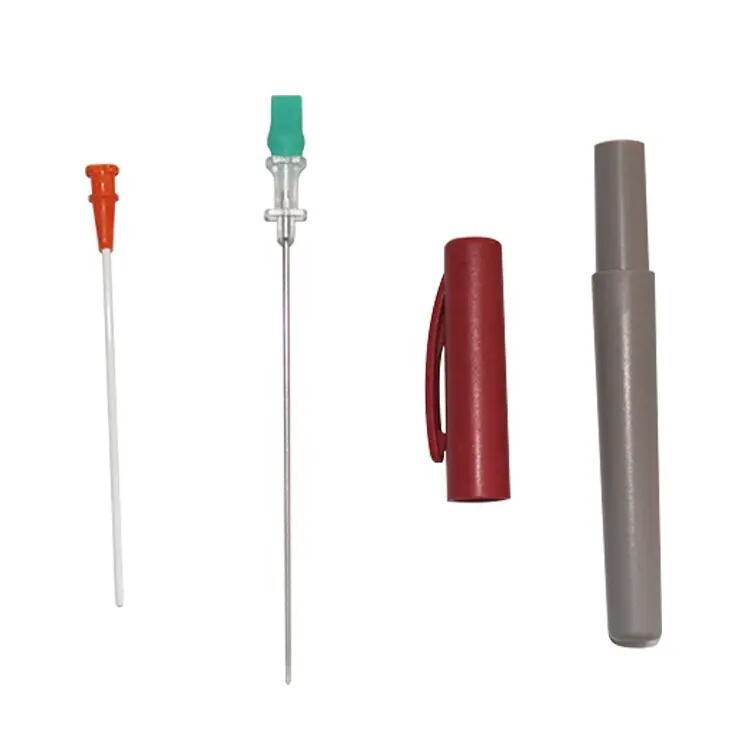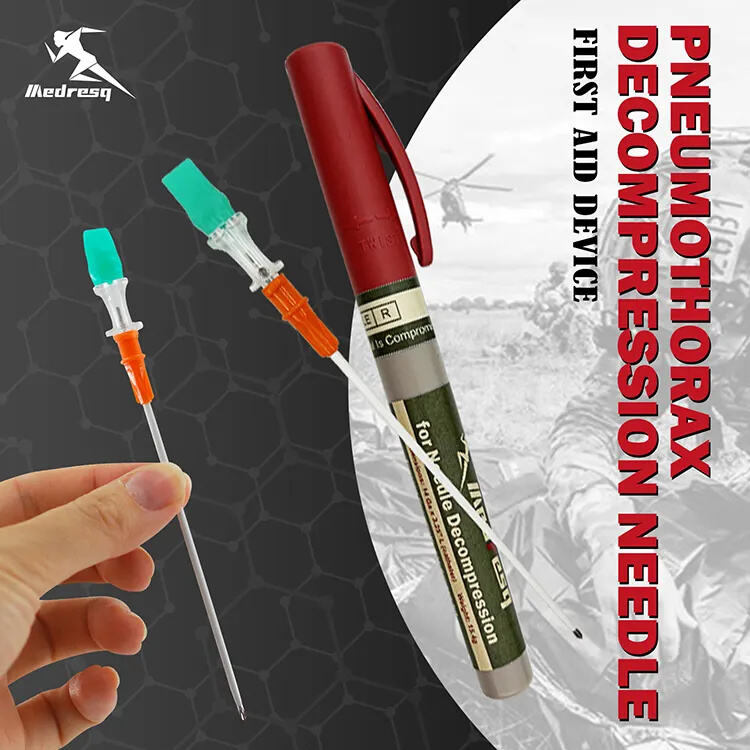Göğüs qabları, pneumotoraksı və ya emis göğüs yarasını bağlamaq üçün tibbi şərtlərdə istifadə edilir. Gögüt zədələnirsə, dişli hava daxil ola bilər və akcılər çövəşə gələ bilər. Daha böyük problemlərin baş verməsinə səbəb olmaması üçün bu halların sürətli və aydın şəkildə işlənməsi vacibdir. Ventili ilə malum göğüs qabı, fərqli hallarda daha yaxşı işlədiyi üçün geleneksi göğüs qabından daha çox seçilməkdir. Bu, ventili olan və olmayan göğüs qablarının necə istifadə ediləcəyini və müharibə və sivil şərtlərdə yaraları tedbir etmək üçün praktikaları araşdırır.

Ventili olan və olmayan Göğüs Qablarının Mekanizmi
Ventiliyasiya edilmiş Göğüs Qapları
Ventili olan və olmayan göğüs qabları arasındakı fərq, onların xüsusiyyətlərindən gəlir. Qabın ən azı bir valv veya kanalı var ki, göğüsteki havanın və sıvıların daxil olmaması üçün çıxmasına imkan verir. Əsas hissə valvdur, ya da flaqon kimi və ya tankdan artıq basinqi salmağa kömək edən məntiqi struktur.
Yaralanma sonra göğüsə daxil olan hava miktarının artması, ciyəl və qalbi sıxacaq ki, bu çox təhlükəlidir və ən çabuk şəkildə dikkat tələb edir. Göğüs qapları istifadəsi ilə, göğüzdən saxlanılan hava ventillədən çıxabilir, bu da təhlükəsizliyi artırır və çox daha az basınç riski yaradır. Bu, xəstəyə kömək edir və əlavə tibbi müalicələrin verilməsinə imkan verir.
Ventiliyasiya edilməmiş Göğüs Qapları
Ventilsiz göğüs qabı yaraya qoyulur ki, hava göğüze daxil olmasın. Qap, xarici maddələrin yaraya daxil olmasını dayandırır, lakin göğüzdəki hava və sıvıların çıxmasını təmin etmir. Yarıkmən idarəetmə, daxili basıncı artırıb, bu da çox təhlükəli ola bilər.
Bu göğüs qapları ventilləşməyə malik deyil, beləliklə, qap içindəki basınc arta bilər və çabucuza yenidən nəzarət altına alınıb, ehtiyac olarsa, basınc altında olan qabı çıxartmaqla və ya dəyişməklə idarə edilməlidir, amma bu, müharibə kimi çətin hadisələrdə və ya uzaq yerlərdə çox zor ola bilər.
Göyələrə mühafizə qapları'nın silahlı qüvvələrdə və sivil travmada praktik tətbiqləri
Göyələrə dəqiqlik yaradan situasiyalarda göyə travmaları ümumiyyətlə çoxdur. Açıq pneumotoraks hem silahlı qüvvələrdə, hem də sivil tibb müəssisələrində bu cihazların köməyi ilə effektiv şəkildə idarə olunur.
Silahlı qüvvələr tətbiqlərində
Çoğu asker müharibə zamanı sındırıcı yaralanmalara malikdir, bu səbəbdən orduda tibbçılar tibb çantalarında həmişə ventiliyasiya göyələrə mühafizə qaplarını da götürür. Müharibə sahəsindəki tibb xidməti sürətli və düstursuzdur, bu səbəbdən texnika sadə və güvəndir olmalıdır. Ventiliyasiya göyələrə mühafizə qapları bu xüsusiyyətləri ödəyir, onlar istifadəsi asan olub və əsas fərdiventiliyasiya imkanı verir ki, yaralanan askerlər yalnız tibb mərkəzinə gəlmədən də yardım ala bilsin.
Tourniketlərin yarayı bağlamaq və göyədəki tənzimlənməni sabit saxlamaq üçün əzələnəcək fikirlərə ehtiyac olmaması tibbçıların bir neçə qurbanlı durumda daha çox insanı kömək etməyə imkan verir.
Sivil Travma Müraciati
İnsanlarla bağlı acil durumların olduğu məsafələrdə, ventiliyasiya funksiyasına malik göğüs qapları da əhəmiyyətli rol oynayır. Avtomobil avadanlıqları, sənaye ortamından gələn zədələr və stablama və ya şəxsi atəşli silahlarla zədələnmələr açıq göğüs yaralarına səbəb olmaqla tanınır ki, bunlar fərk edildikdən sonra tibbi yardım almalıdır. Acil tibbi kömək xidməti (EMT) və ilk kömək edənlər, marazılara bədəni tibbi yardımı almaq üçün iki qapağı də istifadə etməlidirlər.
Ventiliyasiya funksiyasına malik göğüs qapları istifadəsi asan olduğundan, əməkdaşlar genelliklə onları hər kəs tərəfindən ilk kömək setlərində saxlanılır və bu da göğüs zədələrinə səbəb olan hallarda kömək etmək üçün istifadə olunur. Bu, tibbi yardima uzun yol səfəri olan xəstələrə ehtiyac duyulan bölgələrdə çox vacibdir.
Açıq pneumotoraks üçün verilən həmləyi artırmaq üçün ventiliyasiya funksiyasına malik göğüs qaplarının əhəmiyyəti isbat edilib. Ventiliyasiya funksiyasına malik qapların avtonomisi, ventilsiz qapların tapdığı bir çox problemləri dayandırır və heyvanların yaşamasının ehtimalini artırmışdır.
 EN
EN
 FR
FR
 DE
DE
 IT
IT
 JA
JA
 KO
KO
 RU
RU
 ES
ES
 AR
AR
 BG
BG
 HR
HR
 DA
DA
 NL
NL
 FI
FI
 EL
EL
 NO
NO
 PL
PL
 PT
PT
 RO
RO
 SV
SV
 TL
TL
 ID
ID
 SR
SR
 UK
UK
 VI
VI
 SQ
SQ
 TH
TH
 TR
TR
 AF
AF
 MS
MS
 CY
CY
 IS
IS
 HY
HY
 AZ
AZ
 KA
KA
 MN
MN
 MY
MY
 KK
KK
 UZ
UZ
 CS
CS



